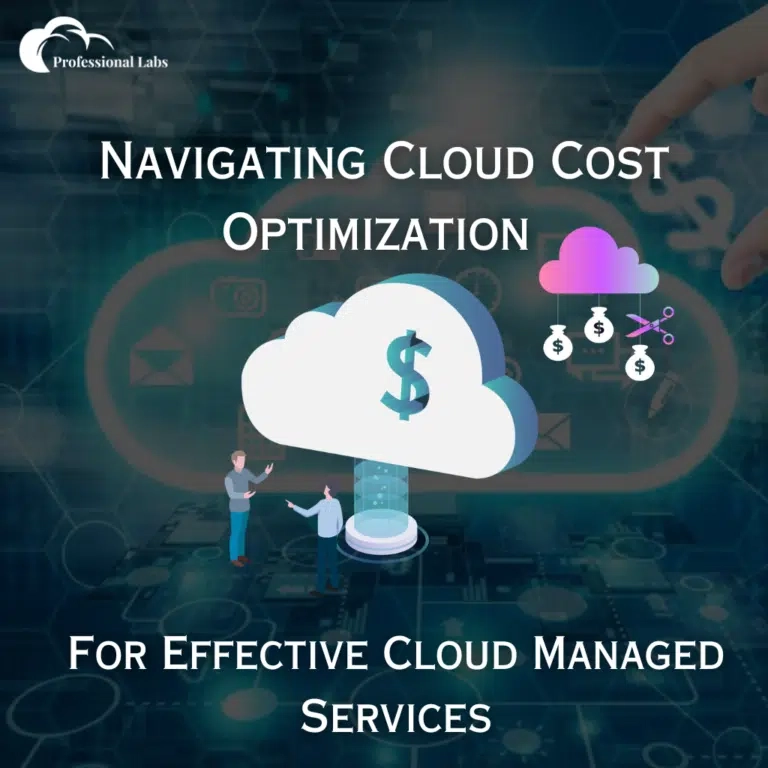- Home
- About
- Services
- Managed SOC Security Service
- Azure Virtual Desktop Service
- Defender For Endpoint Technologies To Safeguard Networks
- Cloud Managed Services
- Email Security Services Provider
- Expert Citrix Consulting Services
- IT Help Desk
- PKI Consulting
- Microsoft Cloud App Security Services
- Microsoft Defender For Identity Security Services
- Market Research Services
- Modern Workplace
- Web Development Services
- Active Directory Consulting
- Azure Cloud Managed Security Services
- IT Training Services
Support and Market Research
- Partnership
- Blog
- Contact
Navigating Cloud Cost Optimization for Effective Cloud Managed Services

Introduction:
Embark on a journey of financial mastery with our guide to Cloud cost optimization. In the ever-evolving landscape of cloud infrastructure, understanding the nuances of financial management is key. This guide not only highlights the importance of financial control in cloud operations but also unveils strategic approaches that harmonize variable cloud spending with financial responsibility. The focus on intelligent procurement of cloud services and the optimization of cloud capacity forms the bedrock of successful cloud spending. Dive into basic yet powerful cost optimization strategies that serve as the catalyst for your cloud cost management journey. Join us in sculpting a future where every cloud investment is a conscious decision, propelling your enterprise towards unparalleled success in the cloud. Your path to financial efficiency starts here. Let’s explore and optimize together.
Cloud Cost Optimization Essential Strategies
Identifying Mismanaged Resources:
Wasteful spending often results from unused or unattached resources. From idle load balancers to forgotten storage volumes, these mismanaged resources contribute to unnecessary costs. The key is to regularly monitor cloud bills, identifying and eliminating such resources to streamline running costs. Additionally, maintaining discipline in sandbox environments ensures the proper cleanup of instances, avoiding ongoing expenses for unnecessary resources.
Monitoring Cost Anomalies:
Leveraging tools like Middleware with cost management consoles can provide crucial insights into usage patterns. Machine learning functionality aids in detecting spending anomalies, allowing organizations to set benchmarks and receive alerts when exceeding expected thresholds. This proactive approach enables a thorough analysis of the root causes of anomalies, preventing unexpected costs and aligning with planned budgets.
Utilizing Autoscaling for Efficiency:
Autoscaling emerges as a powerful tool to optimize costs by dynamically adjusting server capacity based on application monitoring. This automated approach ensures steady performance at the lowest possible cost, responding to traffic spikes without manual intervention. By allowing applications to adapt to demand automatically, autoscaling not only enhances efficiency but also minimizes the need for real-time responses to fluctuating workloads.
Leveraging Reserved Instances (RI):
While on-demand pricing is common, organizations can explore reserved instances (RI) for substantial cost savings. Offering a 75% discount, RIs involve upfront payment for a specific cloud capacity over a predetermined period. This strategy proves beneficial for steady workloads with minimal scaling needs. Additionally, considering spot instances, which involve the auctioning of spare computing capacity at reduced rates, presents another avenue for cost-effective cloud services.
Optimizing Cloud Costs Best Practices
Embracing a Microservices Environment:
Transitioning from legacy applications to a microservices-based architecture can yield significant time and cost savings. Incremental design changes and partial migration allow organizations to identify and eliminate inefficiencies inherited from on-premises environments. This strategic move supports a more efficient cloud deployment, avoiding the pitfalls of migrating inefficiencies to the cloud.
Harnessing Heat Maps for Informed Decisions:
Heat maps provide visual representations of computing demand peaks and troughs, offering insights into service usage patterns. Organizations can use this information to identify resources that can be safely shut down during specific times without disrupting critical services. Configuring schedules based on heat maps ensures the optimization of cloud costs by running services only when needed.
Rightsizing Computing Services:
A comprehensive overview of cloud services is crucial for rightsizing, necessitating either recentralization of IT or standardized departmental operations. Granular visibility facilitates the identification of over-provisioned or idle assets, allowing organizations to rightsize usage and reduce costs. Rightsizing tools provide notifications for cost overruns, empowering organizations to optimize cloud costs proactively.
Single Cloud vs. Multi-Cloud Strategy:
The decision between a single cloud and a m ulti-cloud strategy involves weighing the benefits of volume discounts against the avoidance of vendor lock-in. While multi-cloud solutions enhance uptime and availability, they may miss out on potential discounts from a single cloud vendor. Organizations must carefully consider their size, business needs, and the administrative complexities associated with managing multiple platforms.
Real-time Analytics for Informed Decision-Making:
Access to real-time information empowers teams to make informed decisions that impact the bottom line positively. Monitoring cost indicators and identifying unusual patterns enable organizations to address potential cost-saving opportunities early on. Timely intervention prevents further losses and allows for resource allocation to support high-revenue workloads effectively.
Eliminating Shadow IT Practices:
Shadow IT, where employees independently use company cloud resources for personal projects, contributes significantly to unaccounted costs and security risks. Educating the workforce about the dangers of shadow IT and implementing regular audits to block unsanctioned apps are essential steps to prevent unauthorized cloud access and optimize costs.
Conclusion:
In conclusion, cloud cost optimization emerges as a strategic imperative for organizations seeking to harness the full potential of cloud resources while maintaining financial efficiency. By implementing the outlined best practices, organizations can navigate the complexities of cloud cost management effectively. Proactive cost optimisation combined with cloud managed services opens the door to more economical cloud installations, better resource use, and increased operational effectiveness. Embracing a comprehensive strategy tailored to organizational goals ensures that the cloud remains a valuable asset rather than an unchecked cost center. As the cloud continues to play a pivotal role in modern business operations, mastering cost optimization becomes a cornerstone of sustainable and impactful cloud management.
Connect with us to know more about Cloud Managed Services

